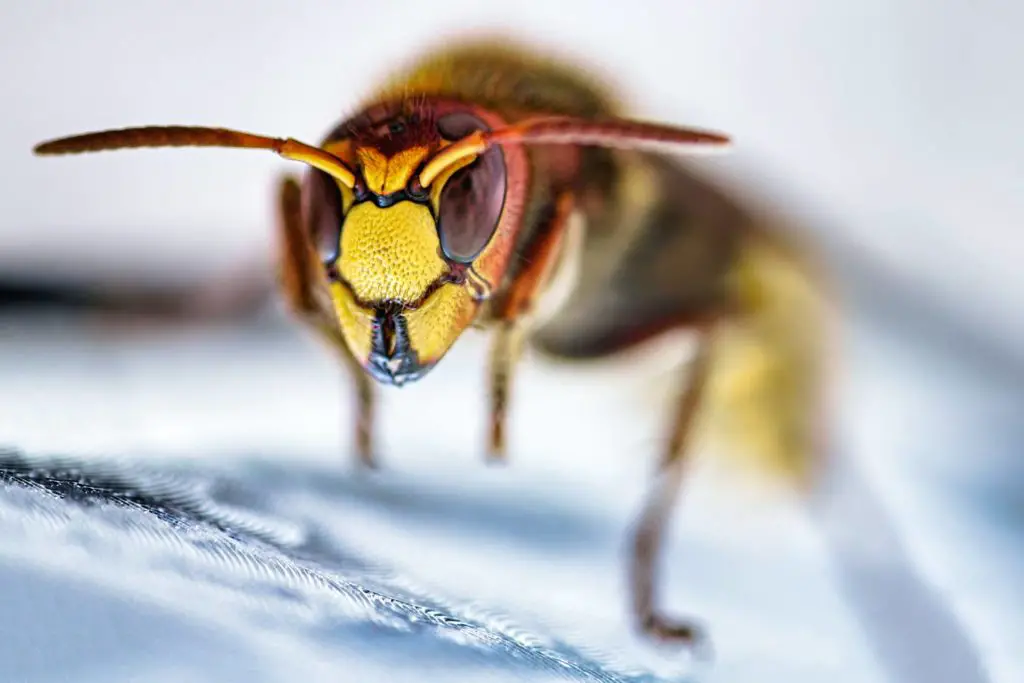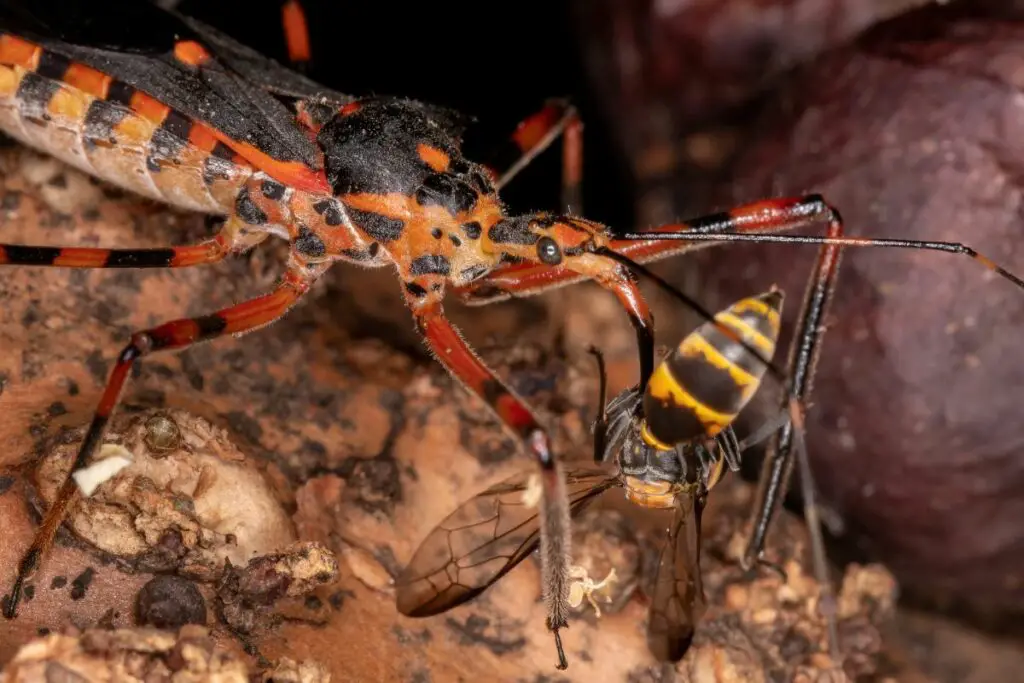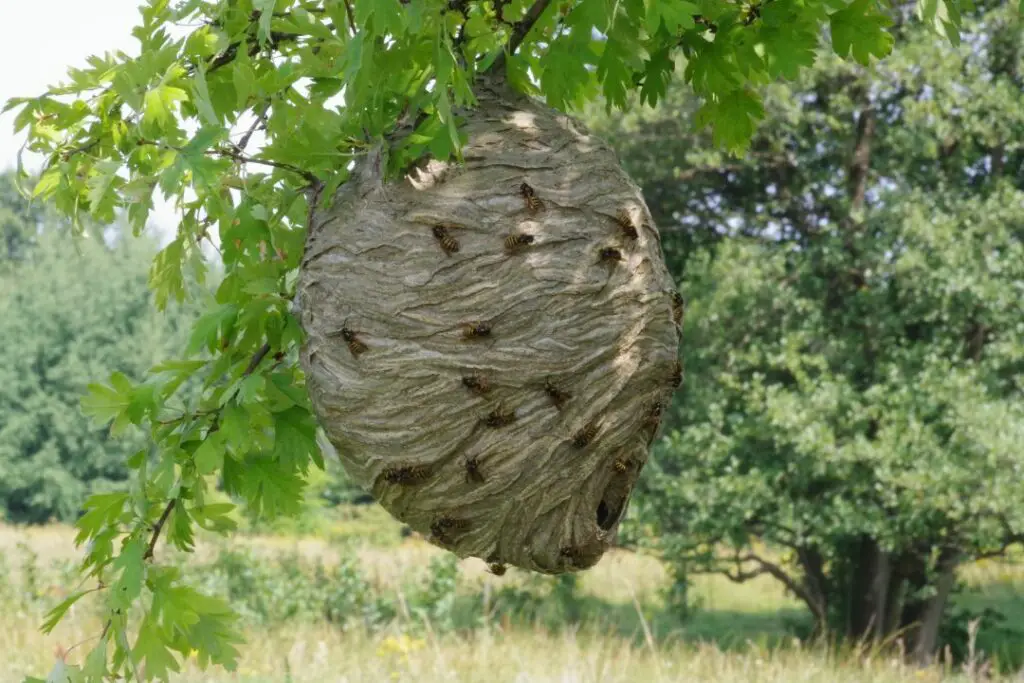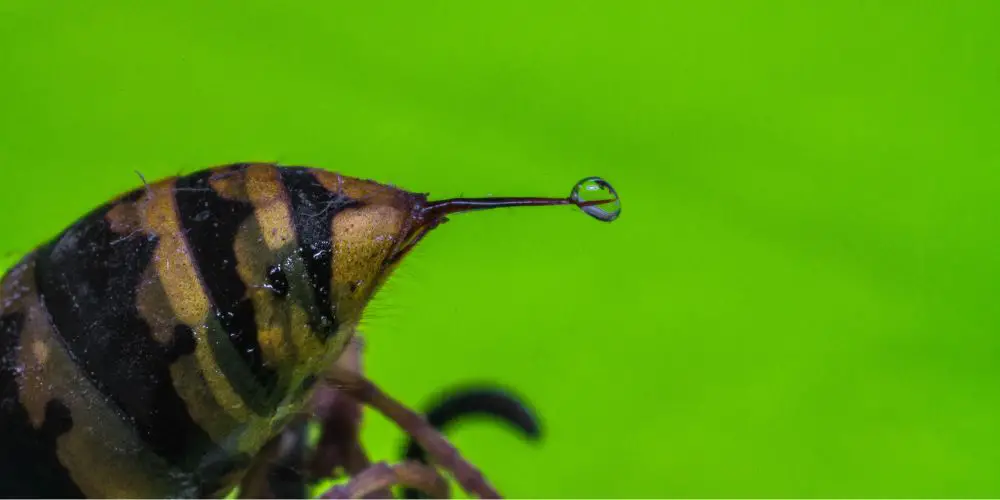Last updated on September 21st, 2023 at 12:07 pm

As we head towards colder months and the temperatures begin to drop the amount of insect activity in your garden or wild area starts to dwindle.
Honey bees set about preparing themselves for winter by huddling in nests or seeking cosy, protected spots to hibernate.
But what about their slightly less popular counterpart the wasp (often referred to as yellow jackets), where do wasps go in the winter and what mechanisms have they developed for dealing with the much colder temperatures winter has to offer?
Table of Contents
What do wasps do during the winter?
There are many different types of wasps but for the purpose of this article, I will be detailing the lifecycles of Common and European wasps in the UK.
They’re easily identifiable by their bright yellow and black stripes (much brighter than any flying insects apart from some varieties of hoverflies that actively mimic wasps’ colouring as a warning to potential predators).
It’s important to note that wasps in warmer climates and solitary wasps deal with winter completely differently and when I’ve created an article detailing their behaviour I will link it below.
As temperatures drop below 50°F or 10°C and cold weather sets in, wasps will stop taking flight for forage and resources.
Weather in the UK is volatile so late Summer into early fall will provide sporadic days of warmth that allow flight but the consistency of temperatures is rare.
When the majority of daylight hours drop below the wasp-required flight temperature it indicates a change in wasp nest behaviour, switching from growth and expansion to survival.
Wasp queens will stop laying eggs and any remaining eggs are left to produce females set to become new queens and some male wasps to undertake mating flights.
The male wasps are easily distinguishable by their much larger, hairier elongated abdomen and lack of a sting. These late-blooming males are destined for a very short life and will die quickly after mating in early to mid-autumn.
Do all wasps survive the winter?
Unfortunately, the majority of a wasp colony will die during or shortly after the first frost of the winter.
The reduction in temperatures and daylight hours means that lots of the resources they previously consumed like nectar and small insects are in short supply.
During this period the nest enters into an extended famine in which all of the worker wasps will eventually die of starvation.
As the cold sets in, it begins to have an effect on the worker wasp’s central nervous system similar to that experienced by humans suffering from hypothermia.
The same can be said for old queens who will sadly expire in the cold icy weather.
This can cause disorientation and often leads to wasps mistaking light sources for the sun and entering homes by accident.
Unlike the worker wasps, there are a select number of female wasps that if all goes to plan will survive the winter months and emerge as new queens ready to seek out and construct new nests.
If you’ve seen a wasp in the early spring and you’re wondering what a queen wasp looks like then you can use the image below for reference:
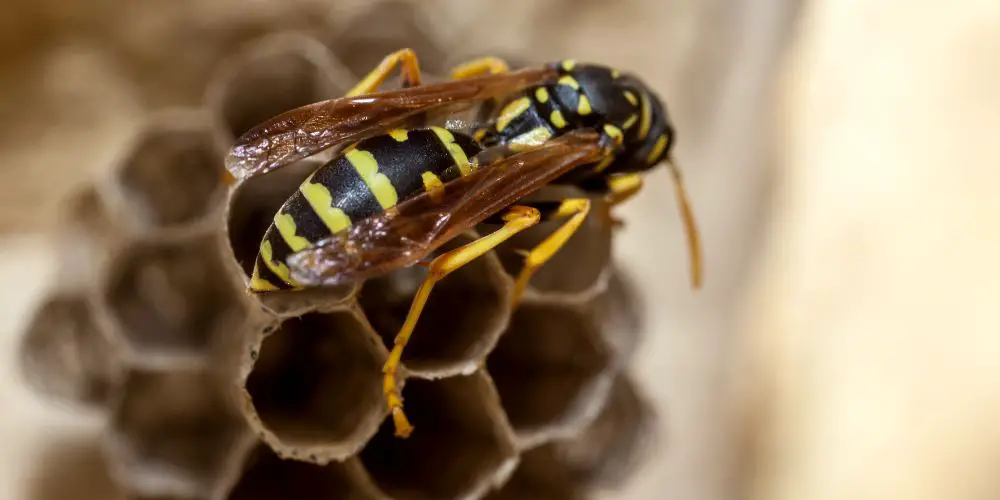
Check out our interesting read on where do bees go in the winter for more fascinating facts about bees.
What happens to new queens during the winter?
New queens that have left the nest in late summer will hunt for a few days to gather the resources they need to survive through the winter, before seeking out a suitable new place to hibernate.
Queens will look for sheltered nooks and crevices in nature, buildings or man-made structures to start their hibernation process.
This provides natural defence against the weather and protection from larger insects and other predators.
Hibernating queens are easily identified by the proximity of the wings to the thorax. This response helps the wasp maintain her body heat for the duration of her long sleep.
Warm places wasps use to hibernate over winter in your property/garden include:
- Sheds
- Window frames
- Door frames
- Bee bricks
- Garages
- Fascias and guttering
- Bug hotels
- Vehicles
- Outbuildings
- Wall cavities
- Bee hotels
- Crevices of buildings
Here we can see an example of a queen wasp that’s taking up residence in a bee hotel
Wasps are well known for using a wide variety of places for their nests, it really depends on how much food is available to forage nearby and how protected it is from severe weather and access by predators.
Find out what happens if a queen wasp dies and the catastrophic effects it can have on the rest of the nest’s inhabitants.
When do wasps reemerge in spring?
When spring arrives and temperatures start to rise, hibernating queens will begin to emerge and seek out potential new nest sites to start their new colony.
This normally falls in line with the first run of consistently warm weather in spring.
While wasps won’t use the same old nest twice they will happily construct a new nest alongside the previous.
So if you experience wasps on your property or in your home there’s is a good chance they’ll return the following year.
At this point, the queen lays eggs in large numbers with some of the fertile females going on to become potential future queens for the following wasp life cycle.
Find out more about when wasps die off and what happens to their nest in our fascinating short read.
How to deal with wasps in your home or on your property
If you have a nest located inside or close to your property it’s a valid reason for concern. While wasps aren’t overly aggressive they will sting if they feel they or the colony is being threatened.
If your property needs a nest to be taken away using a safe removal process we strongly recommend contacting a professional to deal with any wasp infestations.
Wasp experts are perfectly placed to advise on the best course of action and have a great understanding of the most common types of wasps you’ll find in your home.
While a single wasp sting isn’t going to kill you, multiple stings can have a severe effect on your respiratory system and people with allergies run the risk of anaphylactic shock.
Conclusion
Wasps are fascinating social insects with ingenious methods for dealing with cold weather and the winter months.
At Revive a Bee we love all kinds of insects and we’ve got helpful reads on not only waps but bees, butterflies and all the other wonderful wildlife you see in your gardens and wild areas.
Don’t miss our other deep dives into the undergrowth to find out more about our often-overlooked garden inhabitants.

